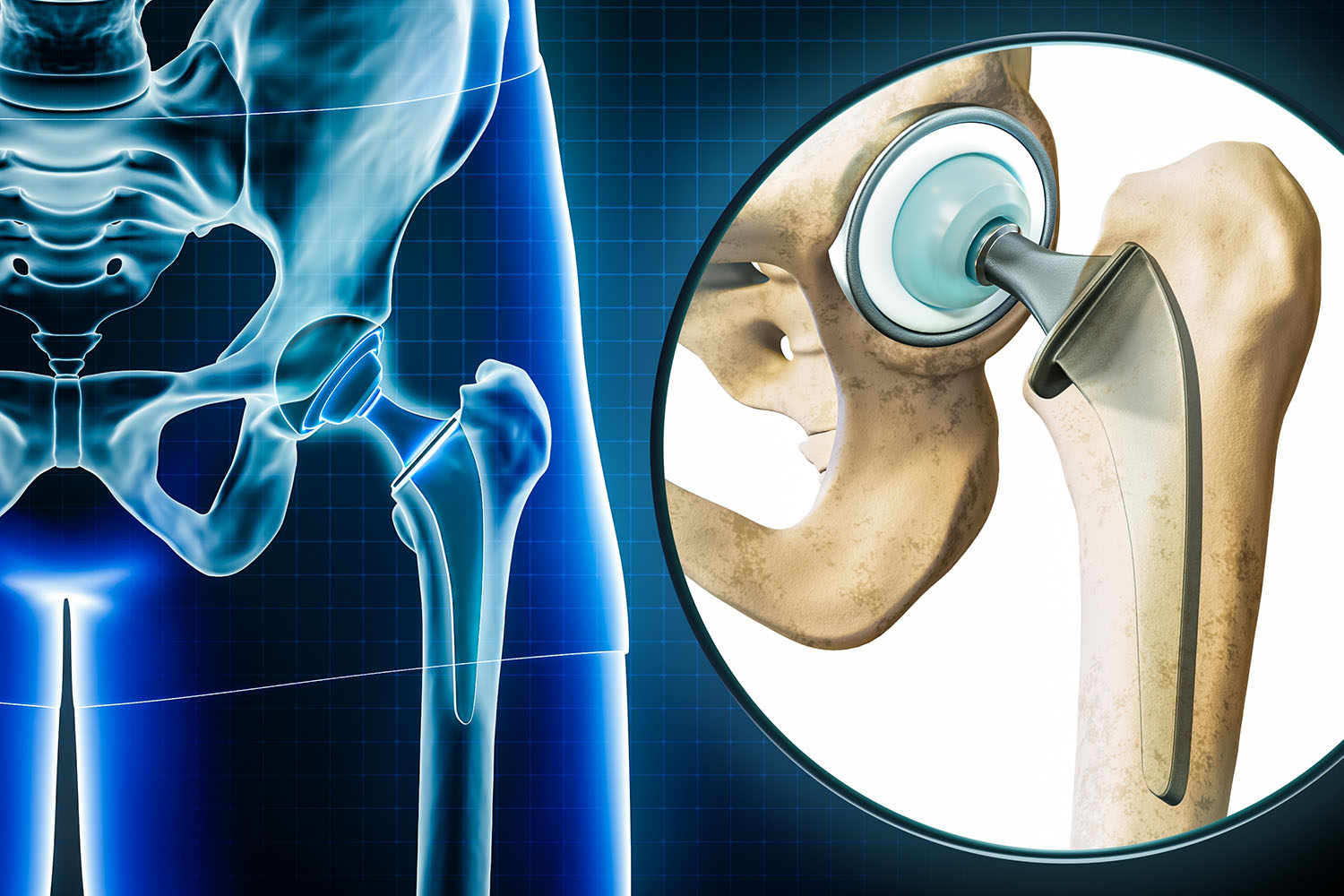Overview
Chronic hip pain can be debilitating, robbing individuals of their mobility and joy in daily life. For many, traditional treatments may provide limited relief. However, total hip replacement surgery stands as a beacon of hope, offering a chance to regain independence and vitality. Let’s delve into the realm of total hip replacement, exploring the facts and research surrounding this life-changing procedure.

Understanding Total Hip Replacement:
Total hip replacement, often referred to as total hip arthroplasty, involve the surgical replacement of damaged hip joint components with artificial implants. These implants, meticulously designed from durable materials such as metal alloys, ceramics, or advanced plastics, aim to replicate the natural function and movement of a healthy hip.
Research Insights:
Decades of research and advancements in medical technology have propelled total hip replacement to the forefront of orthopedic surgery. Studies consistently highlight the efficacy of this procedure in relieving chronic hip pain and restoring mobility. A meta-analysis published in the Journal of Bone and Joint Surgery found that total hip replacements significantly improved hip function and quality of life across diverse patient populations.
Identifying Candidates:
Determining candidacy for total hip replacement involves a comprehensive assessment by orthopedic specialists. Individuals experiencing chronic hip pain due to conditions like osteoarthritis, rheumatoid arthritis, avascular necrosis, or severe hip fractures may benefit from this surgery. Research suggests that appropriate patient selection is crucial for optimizing outcomes and minimizing complications associated with total hip replacement.
Surgical Techniques and Innovations:
The evolution of surgical techniques has revolutionized total hip replacement procedures, offering patients less invasive options and faster recovery times. Minimally invasive approaches, such as the anterior and posterior approaches, have gained prominence, allowing for smaller incisions and reduced soft tissue damage. Additionally, advancements in implant materials and design have enhanced implant longevity and performance, contributing to improved patient satisfaction rates.
Postoperative Rehabilitation and Recovery:
While the success of total hip replacement surgery largely depends on surgical skill and implant quality, postoperative rehabilitation plays a pivotal role in optimizing outcomes. Research-backed rehabilitation protocols emphasize early mobilization, strength training, and gait re-education to facilitate a smooth recovery process. Studies have shown that comprehensive rehabilitation programs can accelerate functional recovery and minimize complications following total hip replacement.
Long-Term Outcomes and Quality of Life:
Beyond the immediate postoperative period, long-term studies underscore the enduring benefits of total hip replacement. Research indicates that the majority of patients experience substantial improvements in pain relief, functional mobility, and overall quality of life following surgery. Moreover, longitudinal data demonstrate the durability of modern implants, with many patients enjoying decades of pain-free activity and independence.
Total hip replacement represents a triumph of medical science, offering transformative relief for individuals burdened by chronic hip pain. Backed by extensive research and technological innovations, this procedure continues to redefine standards of care in orthopedic surgery. As we delve deeper into the realm of total hip replacement, let us recognize the profound impact they have in restoring mobility, vitality, and joy to countless lives.


